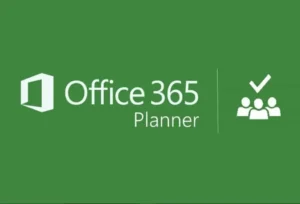Introduction:
Microsoft Dataverse is a powerful data management platform that enables organizations to store, manage, and share data securely. It provides a centralized location for all your data, making it easy to access and use. With Dataverse, you can create custom applications and workflows, automate business processes, and gain valuable insights into your data.
In this blog, we will discuss everything you need to know about Microsoft Dataverse, including its features, benefits, and use cases. We will also explore how Dataverse integrates with other Microsoft products and services, and how you can get started with it.

What is Microsoft Dataverse?
Microsoft Dataverse is a cloud-based data management platform that allows organizations to store and manage their data securely. It is a part of the Microsoft Power Platform, which includes Power Apps, Power BI, and Power Automate. Dataverse enables you to create custom applications and workflows without the need for extensive coding or development skills.
Dataverse offers a range of features, including:
- Data Storage: Dataverse provides a centralized location for all your data, making it easy to access and use.
- Security: Dataverse includes built-in security features that ensure your data is protected.
- Customization: Dataverse allows you to customize your applications and workflows to meet your specific needs.
- Integration: Dataverse integrates with other Microsoft products and services, including Dynamics 365 and Azure.
- Analytics: Dataverse enables you to gain valuable insights into your data, allowing you to make informed decisions.
Benefits of Microsoft Dataverse:
Microsoft Dataverse offers a range of benefits for organizations of all sizes, including:
- Improved Productivity: Dataverse allows you to create custom applications and workflows quickly and easily, enabling your team to be more productive.
- Cost-Effective: Dataverse eliminates the need for extensive coding or development skills, reducing development costs.
- Scalability: Dataverse can handle large volumes of data, making it suitable for organizations of all sizes.
- Security: Dataverse includes built-in security features, ensuring your data is protected.
- Integration: Dataverse integrates with other Microsoft products and services, enabling you to streamline your processes and workflows.
Use Cases for Microsoft Dataverse:
Microsoft Dataverse can be used in a range of industries and for a variety of purposes, including:
- Sales and Marketing: Dataverse can be used to create custom applications and workflows to manage sales leads, track marketing campaigns, and analyze customer data.
- Human Resources: Dataverse can be used to manage employee data, track training and development, and automate HR processes.
- Healthcare: Dataverse can be used to manage patient data, track medical records, and improve healthcare workflows.
- Education: Dataverse can be used to manage student data, track academic progress, and automate administrative tasks.
- Finance: Dataverse can be used to manage financial data, track expenses, and automate financial processes.
Integration with other Microsoft Products and Services:
Microsoft Dataverse integrates with other Microsoft products and services, including:
- Dynamics 365: Dataverse is the underlying data platform for Dynamics 365, enabling you to build custom apps and workflows that integrate with your Dynamics 365 instance.
- Power Apps: Dataverse integrates with Power Apps, enabling you to create custom applications quickly and easily.
- Power Automate: Dataverse integrates with Power Automate, enabling you to automate your workflows and processes.
- Azure: Dataverse integrates with Azure, enabling you to extend your applications and workflows to the cloud.
Getting Started with Microsoft Dataverse:
To get started with Microsoft Dataverse, follow these steps:
Step 1: Sign up for a Microsoft 365 Subscription
To use Microsoft Dataverse, you will need a Microsoft 365 subscription. If you do not already have one, you can sign up for a trial subscription on the Microsoft website.
Step 2: Create a Dataverse Environment
Once you have a Microsoft 365 subscription, you can create a Dataverse environment. A Dataverse environment is a container that holds your data, custom applications, and workflows.
To create a Dataverse environment, follow these steps:
- Go to the Power Platform Admin Center.
- Click on “Environments” in the left-hand navigation menu.
- Click on “New Environment”.
- Enter a name for your environment.
- Choose a region for your environment.
- Choose a database type (either standard or high-density).
- Click “Create”.
Step 3: Customize Your Dataverse Environment
Once you have created your Dataverse environment, you can start customizing it to meet your needs. Dataverse offers a range of customization options, including creating custom tables, fields, and relationships.
To customize your Dataverse environment, follow these steps:
- Go to the Power Apps Maker Portal.
- Click on “Apps” in the left-hand navigation menu.
- Click on “Create an app”.
- Choose a template or start from scratch.
- Select your Dataverse environment.
- Customize your app by adding tables, fields, and relationships.
Step 4: Build Custom Applications and Workflows
Once you have customized your Dataverse environment, you can start building custom applications and workflows. Dataverse offers a range of tools to help you build custom applications, including Power Apps and Power Automate.
To build custom applications and workflows, follow these steps:
- Go to the Power Apps Maker Portal.
- Click on “Apps” in the left-hand navigation menu.
- Click on “Create an app”.
- Choose a template or start from scratch.
- Select your Dataverse environment.
- Customize your app by adding tables, fields, and relationships.
- Use Power Automate to create workflows that automate your business processes.
Conclusion:
Microsoft Dataverse is a powerful data management platform that enables organizations to store, manage, and share data securely. With Dataverse, you can create custom applications and workflows, automate business processes, and gain valuable insights into your data. Dataverse integrates with other Microsoft products and services, including Dynamics 365 and Azure, and can be used in a range of industries and for a variety of purposes. To get started with Dataverse, you will need a Microsoft 365 subscription, and you can create a Dataverse environment, customize it to meet your needs, and build custom applications and workflows.

